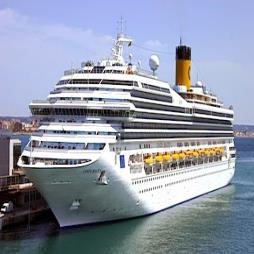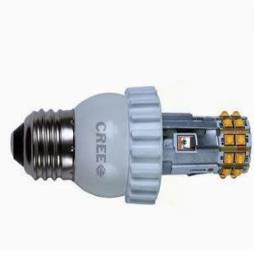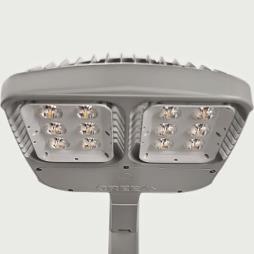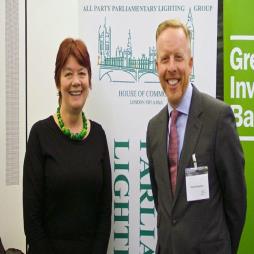Philips LEDs Installed In Costa Cruises Ships Meet New Sustainability Goals
17-03-2015
Royal Philips has, through its Lighting Division, completed the upgrade of 10 ships for Europe’s leading holiday cruise company, Costa Cruises. More than 300,000 Philips LED lights have been installed to enable a massive 60% reduction in the energy used to power each ship’s lighting. By James Hunt:
Philips has installed MasterLED spots and CoreProLED tubes installed on 10 Costa Cruises' ships - saving large amounts of fuel, money and carbon emissions.
Costa Cruises
This interior shot of Costa Fascinosa shows just how much lighting there is in a modern cruise liner - the energy savings can be big using LED lighting.
Costa Cruises & AP
In modern cruise ships, lighting systems account for up to 25% of the total energy consumption that is not used for propulsion. Therefore, any reduction in electricity consumption for lighting reduces the vessel’s operating costs, as well as reducing the environmental impact.
Electricity aboard these big cruise ships is provided by the diesel engines and generators – no direct drive to the screws these days. Typically, Costa Cruises’ ships are powered by diesel-electric power plant comprising four to six 12-cylinder four-stroke medium speed diesel generating sets (usually by Wartsila with electric propulsion motors by GE of around 21MW coupled to fixed-pitch propellers – though some ships use azipod thrusters instead).
A typical output, depending upon the actual ship, might be around 70 – 80MW (over 100,000 BHP). As well as providing propulsion, these main generators provide power for all shipboard consumers from propulsion motors to hotel functions, such as lighting and air conditioning.
Regardless of the propulsion system used, fuel consumption cost is always a big issue with cruise ships and Costa, for example, has reported a reduction of around 11% in fuel consumption, and with reduced CO2 emissions too. The company has already experimented with LED lighting combined with automatic lighting-control that adjusts light levels to match sunlight intensity.
Slashing carbon emissions
It is here, of course, that Philips comes in, with its over 300,000 LED lights being installed in ten of Costa Cruises’ ships. This lighting renovation enables total annual savings of 30,000 tonnes in CO2 emissions.
It is only relatively recently that the shipping industry has had to meet increasingly tough emissions targets, and the switch to energy efficient LED technology is the latest step towards Costa Cruises’ goal to slash its CO2 emissions according to targets it set out in its Sustainability Report published in 2014.
LED spots and tubes
Philips’ MasterLED spots and CoreProLED tubes installed on these ten cruise ships emit excellent quality white light that does not irritate or tire the eyes. Moreover, the LED light sources last far longer than the older conventional lamps (up to 40,000 hours), so maintenance costs are reduced, while the lighting itself is bright and warm and provides an inviting atmosphere for passengers.
Philips completed the re-lamping of three ships back in 2013, with the lighting of the remaining seven ships completely renovated by December 2014. Philips is also involved in the LED lighting renovation of Costa Cruises’ headquarters in Genoa, Italy.
Cruise ships operate with big fixed costs, so Costa Cruises’ aim as an operator is always to maximise efficiency. Fuel is one of the biggest costs, and prices have soared over the last few years (the fall in price in 2014 is unlikely to be sustained for long) so the company is keen to keep associated expenditure under careful control.
A sustainability boost
Commented Stefania Lallai, Costa Cruises Sustainability Director: “This initiative between two companies engaged in providing solutions for the mitigation of the impact on the environment represents another step forward by Costa Cruises in the field of sustainability. The lighting project with Philips is an important initiative undertaken to lower the CO2 impact generated by our fleet and to reduce energy consumption on board.”
Philips has long had an important emphasis on sustainability. For example, we reported only a few days ago that in its continued sustainability drive, the company had increased its sales of ‘Green Products’ to 52% of total sales and has achieved its ‘Green Innovation’ target a year ahead of schedule (read about this by using the link at the bottom of this web page).
In terms of Costa Cruises, the Head of Sustainability for Philips Lighting, Nicola Kimm, said: “Travel by sea already has the lowest carbon footprint compared to other forms of transport in the wider tourism industry.
‘’Think of cruise ships as self-contained mini floating cities, powered by their own energy supply. Switching from 50W bulbs to 7W LED technology increases energy efficiency by more than halving each ship’s electricity consumption required for lighting,’’ she pointed out.
There is, however, one Costa Cruises ship that won’t be benefitting from Philips LED lighting – the ill-fated Costa Concordia that sank in early 2012.
Visit us at Novel Energy Lighting to browse our range of Philips LED products, including the MasterLED GU10 lamps and Master and Corepro LED tubes.






